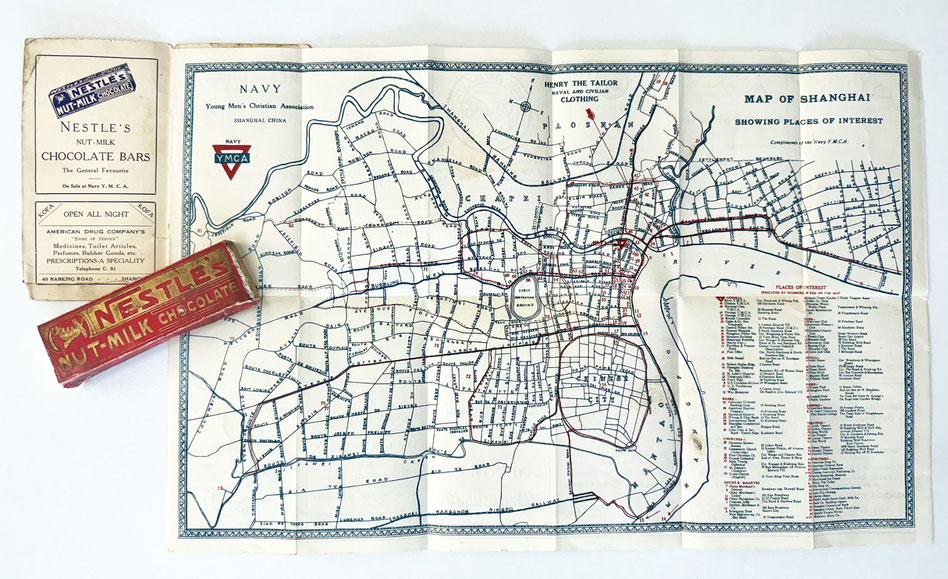
This exquisite 1926 map of Shanghai features an ad for Nestlé chocolate of which we also have an original packaging in our collection. Researching it, we came across the fascinating story how the well-known brand crowdsourced its first English & Chinese slogans for the China market.

The Nestlé company history begins in 1866, with the foundation of the Anglo-Swiss Condensed Milk Company. Henri Nestlé independently developed a breakthrough baby food in 1867 and in 1905 his company merged with Anglo-Swiss to form what we now know as the Nestlé Group.
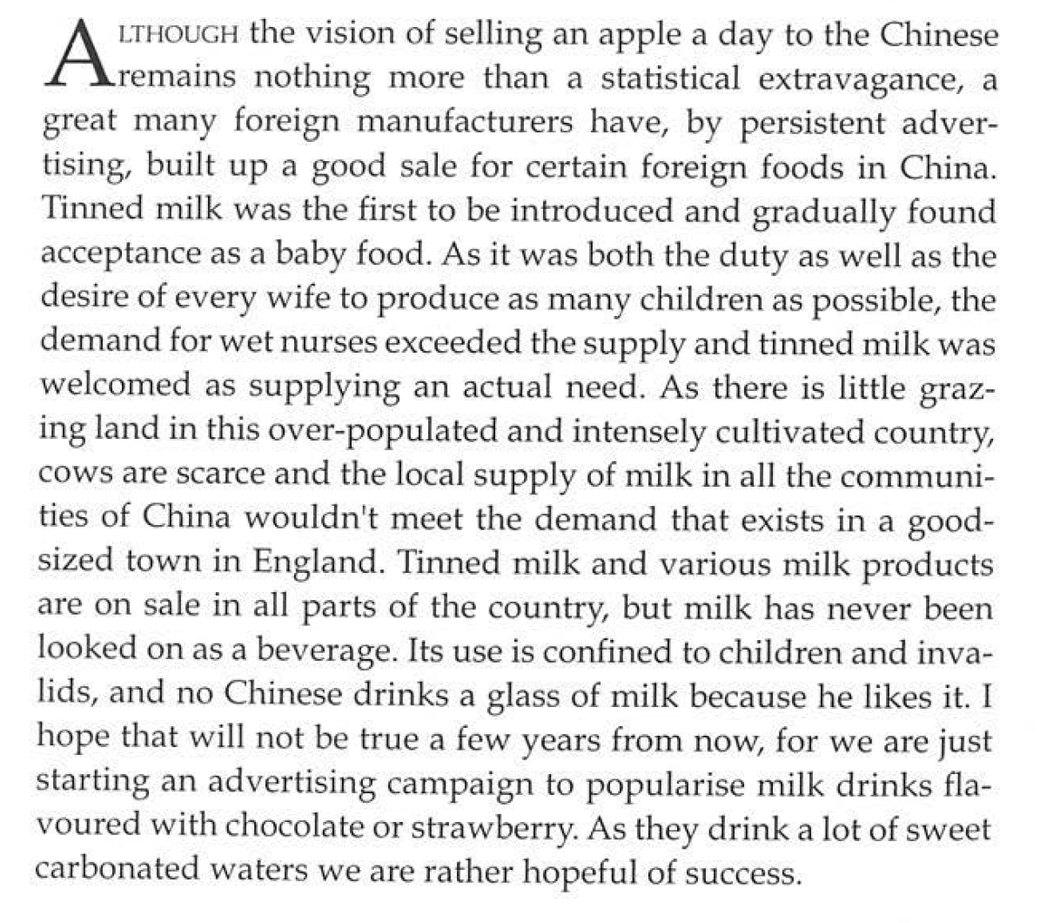

Long before that Nestlé had already been active in China as tinned milk was one of the earliest foreign consumer products introduced to the Far Eastern market.
Nestlé in fact was the first ever trademark registered in Hong Kong with its “Nestlé’s Eagle Brand® Condensed Milk” (飛鷹老牌煉乳) on July 21, 1874. See our related article here.

One year later, in 1875, Nestlé first got involved with chocolate-making back home in Europe, when it started to supply its Swiss manufacturing neighbor, Daniel Peter with condensed milk. He would go on to use it for creating the first edible milk chocolate. By 1904 Nestlé started to manufacture and sell its own chocolate.
Independent of the category, since 1868 Nestlé always used its iconic logo on advertisements and packaging. It features a bird in a nest, rooted in the founder Henri Nestlé's family coat of arms. The original coat of arms depicted a single bird in a nest, which he adapted by adding three baby birds being fed by their mother. This visually linked the logo to his family name, "Nestlé," which means “small nest" in German, and also visually represented his company's nurturing products.


In 1903 we can find the first print ad in Mainland China introducing the now famous logo. One year later, in 1904, an advertisement with the translated Chinese brand name for Nestlé appeared, which is still in use today: Quècháo (雀巢), meaning bird’s nest.
According to Nestlé, the company then opened its first office for China in Shanghai in 1908. While its various milk products were well received as baby food, adults did not consume milk in China at that time – mostly for cultural reasons and due to a high percentage of lactose intolerance. Likewise, cocoa and chocolate were still entirely unknown in China in the early 20th century, a fact we wrote at length here.
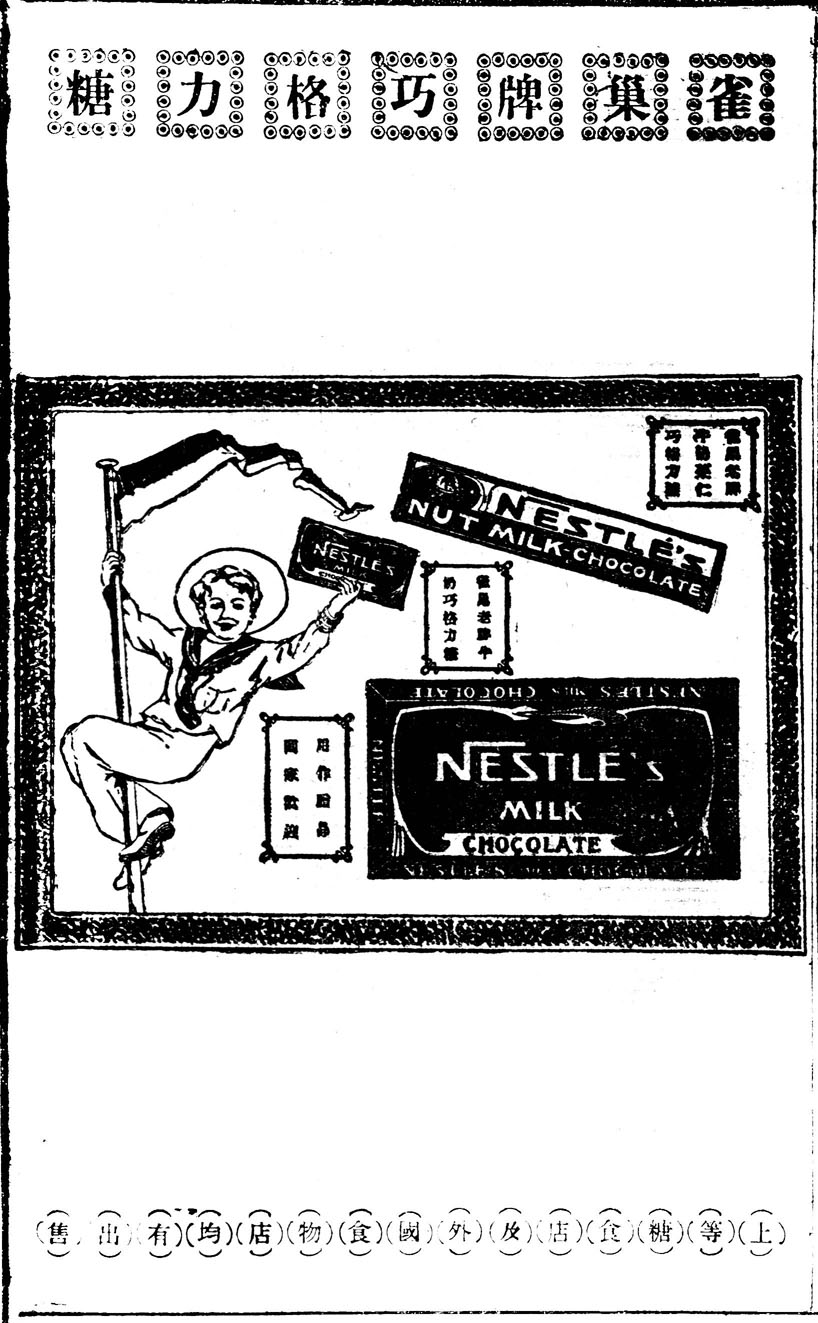

Nonetheless, Swiss-Anglo was the first to advertise its Milkmaid chocolate in 1918, followed by Nestlé with its nut milk chocolate in 1919.
In these early ads and throughout most of the 1920s the word chocolate was translated as 巧格力 (qiǎogélì), most likely because the second character was pronounced as “kah”, rather than “ge” in Shanghainese dialect, compared to standard Mandarin. Only later, 巧克力 (qiǎokèlì), which is still in use today, became more common.

In 1924 Nestlé increased its efforts to develop chocolate as a second top selling category besides its booming infant milk nutrition business. Among others it entered into a partnership with its old neighbor Peter’s (彼得氏) and the pioneering Swiss chocolate brand Caillier (克亞氏) to co-promote and sell their products in China. In 1929 Nestlé bought both brands and fully integrated them in its portfolio. Since then, chocolate became a large part of the Nestlé & Anglo-Swiss business – at least internationally, because the Chinese market was still lagging behind for the sweet delight.

One central initiative to push Nestlé’s brand and the category itself, was a 1924 campaign to establish bilingual slogans for Nestlé chocolates in China:
On November 4th newspapers around the country announced $500 (Shanghai Mex. silver dollars, equivalent to approx. 4,000 USD today) in cash prizes in a contest for the best Chinese and English advertisement slogans.
The campaign proved to be extremely successful and an unprecedented marketing stunt: over 30,000 slogans were submitted!

On December 10th the luck winners were announced.
Mr. F.M. Gonsalves from Shanghai won the first prize for his English submission “Wholesome, Toothsome - Trysome” and Mr. Chao Lung, also from Shanghai, for his Chinese submission “少年乐之,佳人爱之, meaning „Young men enjoy it and beautiful women love it”.
So how does this relate to our 1926 Navy YMCA map, you may wonder?

Well, if you look closely at the Nestlé ad on it, issued 2 years after the giant slogan contest, you will discover that it uses and entirely different English slogan, “The General Favourite”. “Wholesome, Toothsome - Trysome” could also not be found in any ads preserved in the Chinese newspaper archives, leading us to the suspicion that, while admittedly slick, it seems to have ultimately been discarded by Nestlé and never used.
How about the Chinese slogan then? Evidently Mr. Chao Lung’s submission fared a lot better than Mr. Gonsalves: Multiple ads using his Chinese slogan can be found in newspaper ads up to 1926.

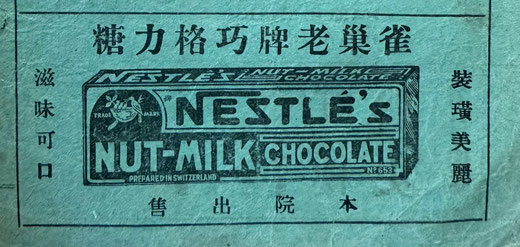
By the 1930s traces of both the consumer-generated slogans vanished, but advertisements for Nestlé chocolates continued incl. e.g. in 1935 and 1936 for movie stars album campaigns for which consumers could send it chocolate wrappers and redeem them for collector photos.
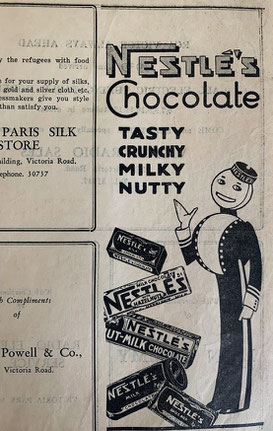
The outbreak of the Second Sino-Japanese War in 1937 fundamentally transformed the operating environment for all foreign businesses in China incl. Nestlé. Ad spending was significantly reduced and after the full outbreak of the Pacific War entirely stopped.
After the war, the establishment of the People's Republic of China in 1949, marked the end of Nestlé's first period of operations in the country.
Like most foreign enterprises, Nestlé departed the market as the new Communist government implemented policies that made continued foreign business operations untenable.


The company would not return to the Chinese market until 1987, when it began preliminary discussions for what would become its modern era of operations starting with the Shuangcheng joint venture. Today, Nestlé has once again a substantial presence in China, operating 23 factories, five product innovation centers, and three R&D centers with over 21,000 employees, reporting approximately $5.51 billion in revenue from its China operations.
P.S. Our 1926 map has more information about Shanghai at the time on its back, together with many other ads that reflect the local Western commercial landscape for international travelers.
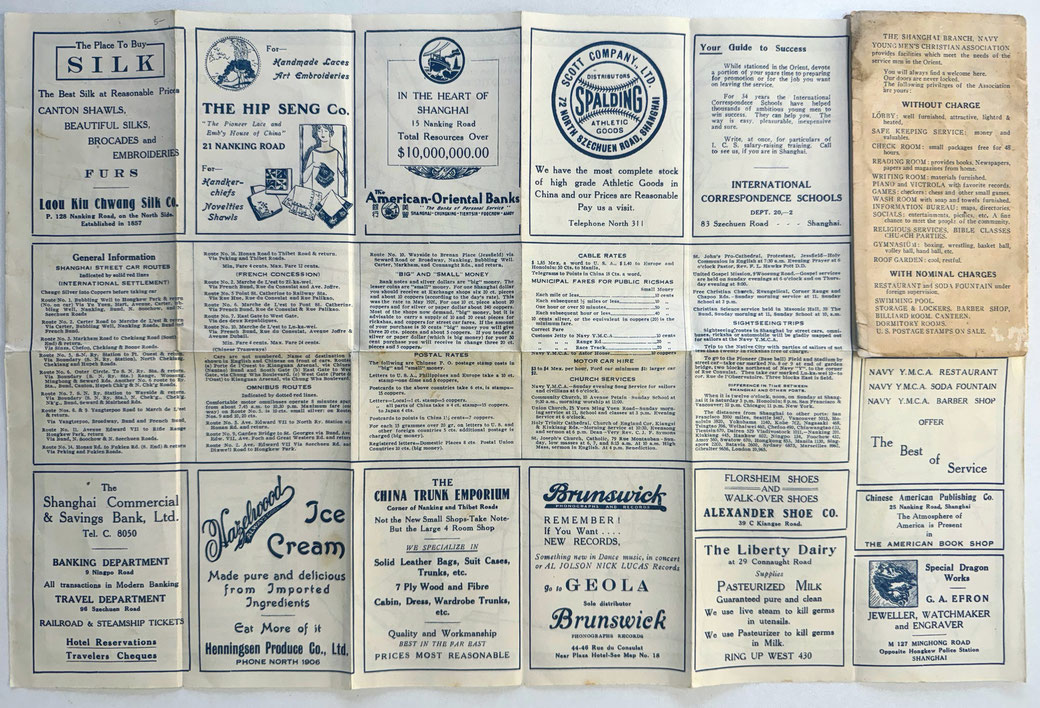
























Write a comment